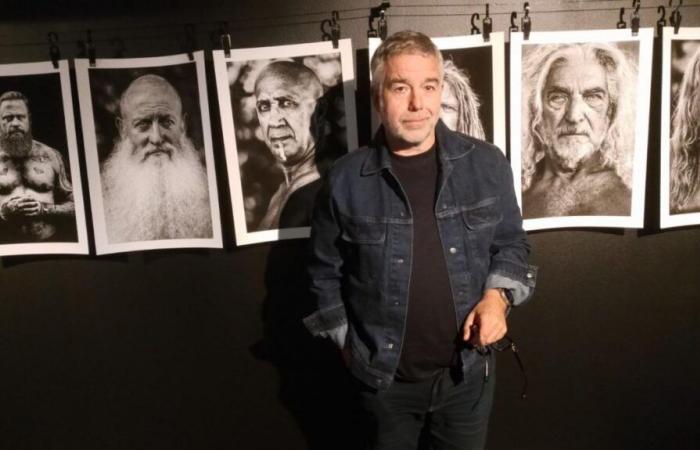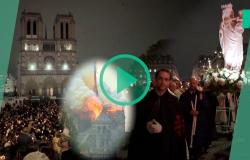Did your models just pose or did you ask them the meaning of their generous hair or baldness?
I asked them to explain their journey to me in text, because a photo is good, but knowing the character is even better, even if they say that the face is the mirror of the soul. The only woman who is in portrait out of the 101 in total, explained to me that before this photo, she had difficulty supporting her baldness and the fact of having taken the plunge, pushed by a friend, meant that now she managed to go out into the street without a cap or wig.
Why are there so few portraits of women?
Only two came to me and one recanted. As these are art photos which are therefore “powerful and hard” showing all the details of the face, even if we can play with the light, the women were, I think, afraid that the wrinkles on their faces would be too conspicuous. The dictate of celebrity photos in fashion magazines that can be retouched leads to this phenomenon.
How were you able to find this quality of photo to highlight the details of the faces?
Thanks to professional cameras and a matte black charcoal print. Like doctors, access to the profession of photographer is regulated in Belgium and during my year of specialization, I chose the “black and white” option which helps me today when I make my own prints. film photos. The “bare” paper of the portraits is not framed to avoid reflections and this gives a more “authentic” rendering.
During your artist residency in Sedan and Charleville, you linked your two professions as designer and photographer by transforming the two exhibition rooms of the media libraries into “black boxes”. What is this concept?
These rooms were previously white and without any personality and now that they are black from floor to ceiling, it gives an atmosphere and ambiance that better highlights the works. Visitors are immersed there and often speak in whispers as if in a cave where they have discovered “treasures”. These “black boxes” are based on the concept “It is from the black that the light comes” advocated in the book “The Praise of the Shadow” by Junichiro Tanizaki.
Beautiful photos by Serge Anton have been on display in a Brussels museum for thirty years
There are few famous photo calendars in the world and Pirelli’s is one of them and in 1994 in London, yours beat this one in a competition. Under what circumstances?
My still life photo calendar had indeed won this European competition and this allowed me to be known in this profession and opened doors for me. These photos which represented books charred during a fire were then exhibited at the Wittockiana Museum in Brussels and are still there today… 30 years later!
Can you tell us about your meeting with Serge Gainsbourg when you took his photo for the cover of Stephan Streker’s book: “Portrait of a Trompe-l’oeil Artist”?
It was after a concert in Brussels and he had been very kind, attentive and almost shy, far from the provocative side that he sometimes showed on screen. There was therefore the Gainsbourg-Gainsbar duality. Twenty years after his death, I was chosen by the Cité de la Musique in Paris to take tribute photos in his house which was painted all black and where everything had remained as it was, down to the shriveled soap in the sink and it was very impressive to me.
Do you also take candid photos?
Yes, I have already covered the Rallye des Gazelles in Morocco with my charity Actions@Village or photographed Victoria Falls from a helicopter, but my thing is to photograph models or inert things on which I can working with light, in light or chiaroscuro, like real creative work.
A few days after the Paris Chocolate Show, what project did you work on in this area with Yann Pennor’s, one of the greatest culinary designers in the world?
These were all black-and-white photos for the book “Éclats” on the chocolate creations of the Belgian Pierre Marcolini crowned in 2020 the greatest pastry-chocolatier in the world. We spent hours around cakes because the lighting should not be too powerful so as not to melt these creations which were really too tempting for our appetite! (Laughs).
All my life, I have been lucky enough to be able to reconcile photography and design”
Did you start with design or photography?
My dad Claude Rebold, who was a landscape architect, had worked for Brigitte Bardot and Mobutu and my mom had a haute couture school and I was therefore immersed in the design world. Afterwards I took photos for decoration magazines and for Dior or LVMH and I was thus able to reconcile my two passions.
You transformed the design of the family home from Sedan to Corne de Soissons following the Japanese philosophy of wabi-sabi. What is she?
It is an aesthetic concept derived from Zen Buddhist principles and Taoism which advocates simplicity, nature, asymmetry, the decrepitude of things, the patina of objects and the taste for aged things.
You, who have traveled the world, seem to be thriving in Sedan. Is it a print?
No, it’s entirely true, even beyond the family ties that bind me to this city. It is precisely because I have been to many cities in the world that I appreciate Sedan where there is comfort of life, a town in the countryside where you can move easily, without pollution and where you can eat good food. artisanal products. I even now make the comparison with Brussels where I still have ties and I can say that I am coming back here as soon as I can.






